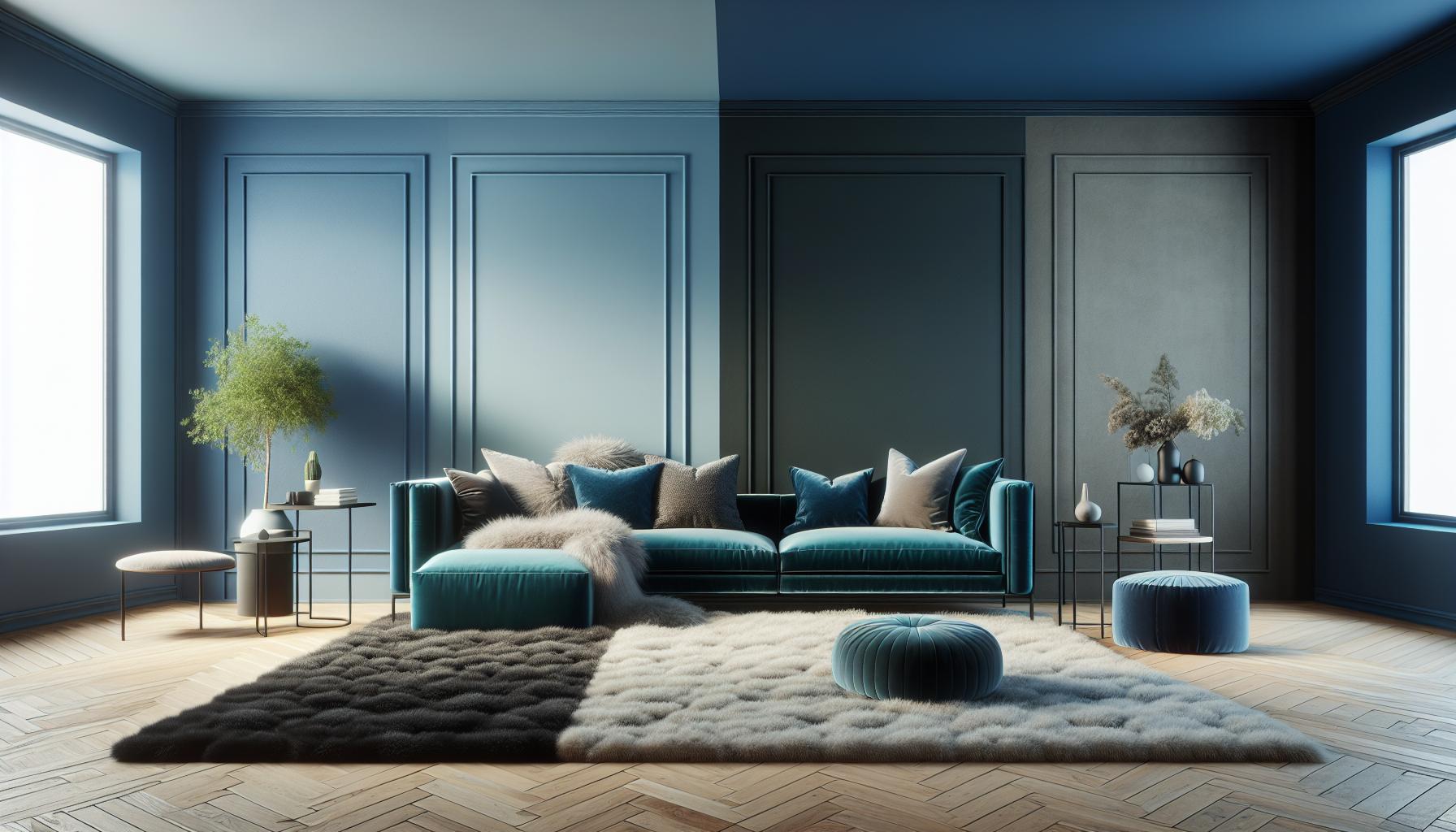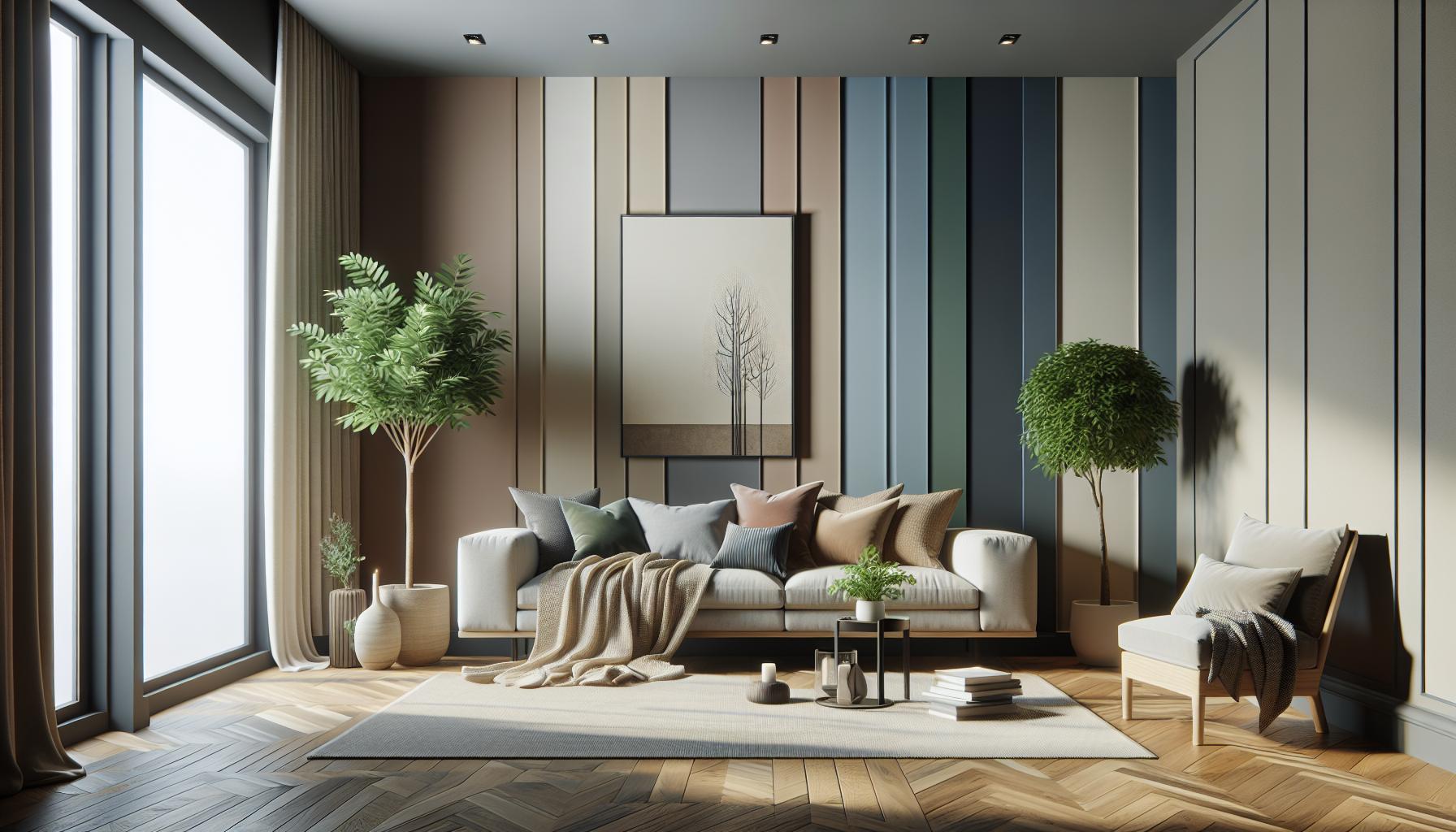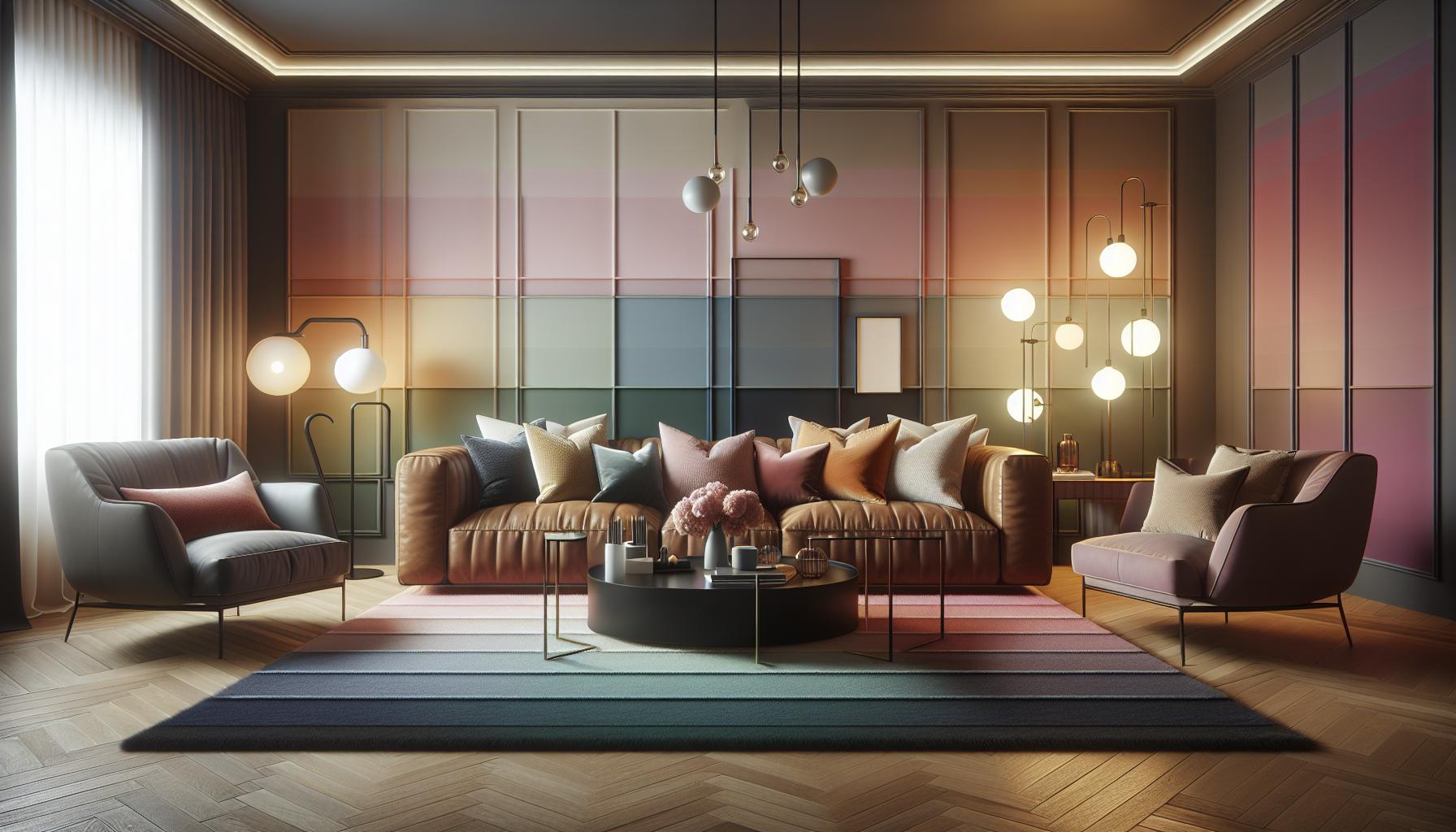When I first stumbled upon gradation interior design, I was captivated by its seamless blend of colors and textures that transform any space into a harmonious sanctuary. This design approach focuses on the subtle transition between hues and materials, creating a sense of depth and continuity that draws the eye and soothes the soul. It’s not just about making a room look good; it’s about crafting an environment that feels balanced and inviting.
In a world where bold and contrasting designs often steal the spotlight, gradation interior design offers a refreshing alternative. It invites us to explore the beauty of gradual shifts and nuanced palettes, making every corner of a room a gentle journey for the senses. Whether you’re looking to refresh your living space or create a calming retreat, understanding the principles of gradation can unlock a world of possibilities. Let’s dive into how this elegant design philosophy can elevate your home.
Key Takeaways
- Seamless Transitions: Gradation interior design focuses on subtle color and texture transitions, fostering a sense of depth and continuity that enhances the ambiance of a space.
- Harmonious Blends: Through gradual shifts in hues and materials, this design style creates a balanced and inviting environment, ideal for crafting tranquil living areas.
- Effective Use of Lighting: Layered lighting in gradation interiors highlights transition points and deepens visual interest, reinforcing a soothing effect.
- Flexibility Across Spaces: Gradation can be adapted to various rooms, from living areas to bedrooms and kitchens, enriching each with cohesive and inviting aesthetics.
- Balance and Coordination: Successful implementation requires careful selection of colors, materials, and proportions to prevent visual clutter while maintaining simplicity and harmony.
Gradation Interior Design
Gradation interior design involves the seamless transition of colors and materials within a space. It focuses on creating a flow that leads the eye gently from one element to another. This design style embraces subtle changes, offering a smooth visual experience that enhances the overall ambiance.
The core of gradation design lies in its ability to blend different elements harmoniously. By incorporating gradual shifts in color shades and textures, it produces a tranquil atmosphere. For instance, a wall might feature a gradient from dark to light shades, continuing onto drapery and upholstery, ensuring a cohesive look.
Colors play a pivotal role, with gradual tones like ombre or monochromatic schemes linking pieces elegantly. Materials such as wood, metal, and fabrics can also be integrated through gradual textural changes, adding dimension. It’s about balance and harmony, ensuring each element complements the next.
Using gradation requires an understanding of scale and proportion. Furniture and decor pieces should vary in size and weight subtly, contributing to the overall gradation theme. This approach prevents overpowering elements, maintaining the room’s serene essence.
Lighting further enhances gradation interiors by emphasizing transition points. Layered lighting creates depth, showcasing the gradual shift from one shade or material to the next. Dimmers and adjustable fixtures help modulate light intensity, reinforcing the tranquil effect.
Gradation interior design offers a unique way to create peaceful spaces by emphasizing subtlety and flow. It requires careful consideration of colors, materials, and lighting to ensure a cohesive and harmonious environment. By applying its principles, one can transform a space into a soothing retreat.
Key Elements of Gradation

Integrating gradation into interior design involves crucial elements that amplify the space’s harmony and depth. Mastering these core aspects, like color transitions and texture dynamics, is essential to create unique, cohesive interiors.
Color Gradation
Color transitions form the centerpiece of gradation design. I achieve seamless effects by shifting hues gradually across surfaces. For instance, an ombre wall moving from a deep indigo to a soft sky blue enhances visual flow. Monochromatic schemes use varying intensities of a single color, bridging elements across a room and linking them naturally.
Texture Variation
Texture diversity adds subtlety and interest. I introduce texture variation by blending materials with finesse. A velvet sofa paired with a woolen rug, for example, transforms sensory experiences by providing tactile contrasts. This delicate balance maintains harmony without disrupting the room’s flow and continuity.
Scale and Proportion
Proper scale and proportion anchor gradation interiors. I select furniture and decor that vary in size to complement one another. A large sectional next to an arrangement of smaller tables creates visual hierarchy. Distributing weight carefully across the space supports the overall scheme, ensuring it feels cohesive and not overbearing.
Benefits of Gradation Interior Design

Gradation interior design offers several advantages that enhance living spaces by using subtle transitions and harmonious blends.
Enhancing Spatial Flow
Gradation design creates a continuous flow that guides the eye naturally from one area to another. By gracefully transitioning colors and textures, this design method ensures a seamless connection between different sections of a space. For instance, a room with gradually varied wall colors or flooring materials facilitates smooth visual movement. The result is a cohesive environment where each element feels thoughtfully integrated.
Creating Visual Interest
Gradation interior design captivates attention by incorporating nuanced variations. Instead of abrupt contrasts, this approach uses gradual shifts to create depth and intrigue. Techniques like ombre walls or layered textiles offer layers of visual appeal, inviting observers to explore the space further. This method enhances the aesthetic experience while maintaining a calm and inviting atmosphere. Through strategic use of color gradients and texture contrasts, gradation design transforms interiors into dynamic yet harmonious environments.
Implementing Gradation in Different Areas

Implementing gradation interior design adapts seamlessly to various spaces, enhancing their unique characteristics. By focusing on subtle transitions, each area transforms into a harmonious and inviting environment.
Living Room Ideas
In the living room, gradation design fosters a cohesive atmosphere by blending colors and textures. For instance, an ombre rug can guide the eye from dark to light shades, establishing a visual flow. Incorporating furniture with varying material finishes, like a leather couch paired with a velvet armchair, adds depth. Selecting cushions and drapery in gradually shifting hues ensures a balanced look. Adding layered lighting, such as a combination of floor lamps and wall sconces, emphasizes transition points, enhancing the room’s tranquil ambiance.
Bedroom Inspirations
The bedroom benefits from gradation by promoting relaxation and harmony. A feature wall with a gradient paint effect, transitioning from soft to dark tones, creates a focal point. Bedding with a monochromatic scheme, adjusting from a light headboard to deeper-toned blankets, maintains continuity. Textural diversity is achieved by combining a plush area rug with a crisp cotton bedspread. Adjustable bedside lamps enhance the gradient experience, allowing for a customizable lighting atmosphere.
Kitchen Designs
Gradation interior design in kitchens uses subtle transitions to create a warm and inviting space. Cabinets with gradually changing shades, from base units to upper cabinetry, maintain consistency. Backsplashes featuring ombre tiles add visual interest without overwhelming the space. Countertops with varied materials, like a juxtaposition of smooth granite and textured wood, contribute to the room’s depth. Under-cabinet lighting, coupled with ambient fixtures, highlights the textural shifts and color gradients, adding to the room’s unified look.
Challenges in Gradation Design
Gradation interior design, while aesthetically pleasing, can present several challenges that require careful consideration to maintain its harmonious allure.
Balancing Complexity and Simplicity
Achieving a balance between complexity and simplicity is tricky. Gradation involves intricate transitions, yet must not appear overly complicated or cluttered. Allowing each element to retain its essence while contributing to the overall flow demands thoughtful selection and placement. In spaces where different textures and colors intersect, maintaining a visual hierarchy ensures that no single component overpowers the subtle gradation effect. Choosing a limited color palette and key textural elements helps maintain equilibrium.
Avoiding Overwhelm
Preventing visual overwhelm is crucial in gradation design. Overuse of transitions or gradients can create a chaotic appearance. Ensuring that the gradation remains a subtle enhancement rather than a dominating feature involves meticulous planning. This requires a disciplined approach to layering and selecting elements, such as using gradual color gradients on a feature wall rather than across every surface. Integrating neutral tones provides visual rest points and prevents sensory overload, helping to sustain the tranquility intended by gradation design.
Subtle Transition and Layering
Embracing gradation interior design opens up a world of possibilities for creating serene and visually captivating spaces. By mastering the art of subtle transitions and thoughtful layering, we can transform our homes into harmonious retreats. This design approach not only enhances the aesthetic appeal but also fosters a sense of calm and balance. With careful consideration of colors, textures, and lighting, gradation design becomes a powerful tool in crafting environments that invite relaxation and exploration. Whether in a cozy bedroom or a lively kitchen, the principles of gradation offer a refreshing path to achieving tranquility and elegance in any space.